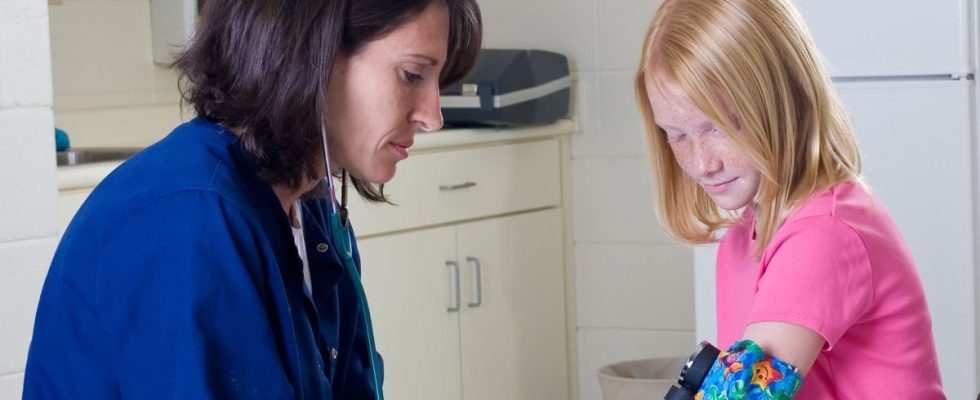Published on
Updated
Reading 3 mins.
To demand better working conditions and greater recognition of their profession, school nurses met in Paris yesterday, May 23. Camille, school nurse from the Rennes academy, who wished to be interviewed anonymously, explains the reasons for this anger.
National education nurses have chosen to demonstrate in front of the Senate. In the street, a few hundred white coats want to make their demands heard, with a clear objective: “to defend health at school”.
A mobilization organized by the two majority unions
This white march was organized by the two majority unions in the profession, SNIES-UNSA and SNICS-FSU. School nurse attached to the academy of Rennes, Camille * (the first name has been changed, note) wanted to testify. “One of our first requests is for the positions of school nurses. We are currently around 7,700 but for there to be nurses in all establishments, we would have to be at least twice as many” she explains first. At present, health professionals are divided between the 60,000 establishments in France, very often between colleges, primary schools, high schools and universities.
The other major point of claim concerns salary increases. “While all the other nurses were entitled to the bonus of 180 euros corresponding to the CTI (the supplement to the indexed tariff, editor’s note) set up during the Ségur de la Santé, we were not entitled to it, whereas we participated as much as the others in the health crisis and that the repercussions, in particular in terms of dropping out of school or absenteeism, are felt until today, for some students. she adds.
A decline in the attractiveness of the profession of school doctor
A parliamentary report written by MP Robin Reda (Renaissance) and tabled in the National Assembly on May 11, 2023 underlines the deterioration of the working conditions of these health professionals at the school and the flagrant lack of staff. The text insists on the decline in the attractiveness of school medicine with the number of school doctors decreasing by 20% in ten years to reach 944 full-time equivalents, currently. The number of nurses has been stable for about ten years.
School nurses oppose the modification of their missions
To remedy this situation, a territorialization of the profession with the creation of services in which school nurses would be grouped under the aegis of a head doctor is envisaged. A measure that Camille totally refuses: “We depend on the Ministry of National Education which wishes to decentralize our profession by creating public health services to which we would be attached. But our missions are not the same. We are here to participate in the academic success of our students, to receive them in consultation, to listen to them, welcome them, follow them or guide them, provide health education… This is not public health that we do, our missions are quite different and we will no longer be able to ensure them if they want to add medical missions, for lack of school doctors in sufficient numbers” she denounces.
More than 18 million consultations carried out by school nurses
In total, no less than 18 million consultations are carried out by these health professionals each year, within the establishments. “Our work, in collaboration with teachers, is essential. It is by discussing with them that we can put our finger on a deeper problem, such as intra-family violence, for example. We can also give the morning after pill to young girls or nicotine substitutes to young smokers… Our profession is an essential link in the health of children and adolescents” she concludes.
